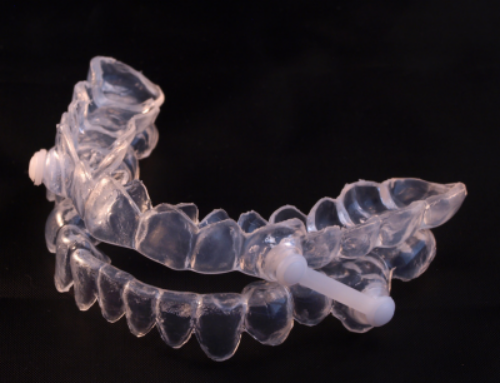Temporomandibular joint disorder (TMD) and sleep apnea are two seemingly unrelated health conditions, but there’s a hidden connection between them that can have a significant impact on your overall well-being. In this blog, we’ll explore what TMD and sleep apnea are, how they are connected, and the importance of recognizing this link for better diagnosis and treatment.
Understanding TMD and Sleep Apnea
TMD (Temporomandibular Joint Disorder)
TMD is a disorder that affects the temporomandibular joint (TMJ), the joint connecting your jaw to your skull. This complex joint plays a crucial role in everyday activities like chewing, talking and yawning. TMD can result from various factors, including jaw misalignment, muscle tension, trauma or teeth grinding (bruxism).
Common symptoms of TMD include:
- Jaw pain or discomfort
- Clicking or popping sounds when opening or closing the mouth
- Headaches
- Earaches
- Facial pain
- Difficulty opening or closing the mouth
Sleep Apnea
Sleep apnea is a sleep disorder characterized by repeated interruptions in breathing during sleep. The most common form is obstructive sleep apnea (OSA), where the airway becomes partially or completely blocked, leading to brief pauses in breathing. These interruptions can occur multiple times throughout the night, disrupting sleep patterns and oxygen supply to the body.
Common symptoms of sleep apnea include:
- Loud snoring
- Frequent waking or gasping for breath during sleep
- Excessive daytime sleepiness
- Difficulty concentrating
- Morning headaches
- Irritability
The Connection Between TMD and Sleep Apnea
The link between TMD and sleep apnea may not be immediately obvious, but it lies in the intricate relationship between the jaw, throat and airway. Here’s how they are connected:
- Jaw Position: TMD can cause changes in the position and alignment of the jaw, leading to an altered bite. This altered bite can affect the position of the tongue and soft tissues in the throat, making them more likely to obstruct the airway during sleep.
- Muscle Tension: TMD often results in muscle tension in the jaw, neck, and shoulders. This tension can extend to the muscles that control the airway, potentially contributing to airway collapse during sleep.
- Bruxism: Many individuals with TMD also experience bruxism (teeth grinding). The clenching and grinding of teeth can further exacerbate muscle tension and affect the position of the jaw and airway.
- Sleep Position: Pain or discomfort from TMD may lead individuals to sleep in positions that increase the risk of airway obstruction, such as sleeping on their back.
Why Recognize the Connection?
Recognizing the link between TMD and sleep apnea is crucial for several reasons:
- Accurate Diagnosis: Understanding the relationship between these conditions can lead to a more accurate diagnosis. A healthcare provider who recognizes the connection can better assess and treat both TMD and sleep apnea.
- Comprehensive Treatment: Addressing TMD and sleep apnea together allows for a more comprehensive treatment plan. Treating TMD may help alleviate some of the factors contributing to sleep apnea, leading to improved sleep quality.
- Improved Quality of Life: Properly managing TMD and sleep apnea can significantly enhance a person’s quality of life by reducing pain, discomfort and sleep disturbances.
Seeking Professional Guidance
If you suspect you may have TMD or sleep apnea or have been diagnosed with one of these conditions, consider consulting our professionals at Virginia Sleep and TMJ Therapy. We can provide a comprehensive evaluation and develop a tailored treatment plan that addresses both TMD and sleep apnea, helping you achieve better overall health and well-being.




